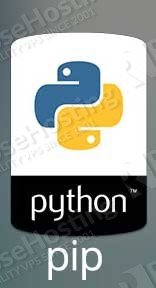
Table of Contents
1. Install Pip on CentOS 7
To install pip on your CentOS 7 server you need to have SSH access. Connect to your Linux server via SSH and install pip using the following command:
yum -y install python-pip
2. Verify Pip installation on CentOS 7
At this point, you should have pip installed and ready to use on your CentOS 7 VPS. To verify that the installation of pip was successful you can use the following command:
pip -V
The output should be similar to this one:
# pip -V pip 9.0.1 from /usr/lib/python2.7/site-packages (python 2.7)
If you get output similar to the one above you are ready to use pip on your CentOS server.
3. How to use pip on CentOS 7
To search PyPI for specific package you can use the following command:
pip search package_name
4. Install package using pip on CentOS 7
Once you are ready to install a specific package you can use the following command:
pip install package_name
5. Uninstall package using pip on CentOS 7
Similarly, if you want to uninstall a specific package you can use the following command:
pip uninstall package_name
6. List all available options you can use
pip has many other useful options. To list all options you can use use pip --help
# pip --help Usage: pip [options] Commands: install Install packages. download Download packages. uninstall Uninstall packages. freeze Output installed packages in requirements format. list List installed packages. show Show information about installed packages. check Verify installed packages have compatible dependencies. search Search PyPI for packages. wheel Build wheels from your requirements. hash Compute hashes of package archives. completion A helper command used for command completion. help Show help for commands. General Options: -h, --help Show help. --isolated Run pip in an isolated mode, ignoring environment variables and user configuration. -v, --verbose Give more output. Option is additive, and can be used up to 3 times. -V, --version Show version and exit. -q, --quiet Give less output. Option is additive, and can be used up to 3 times (corresponding to WARNING, ERROR, and CRITICAL logging levels). --log Path to a verbose appending log. --proxy Specify a proxy in the form [user:passwd@]proxy.server:port. --retries Maximum number of retries each connection should attempt (default 5 times). --timeout Set the socket timeout (default 15 seconds). --exists-action Default action when a path already exists: (s)witch, (i)gnore, (w)ipe, (b)ackup, (a)bort. --trusted-host Mark this host as trusted, even though it does not have valid or any HTTPS. --cert Path to alternate CA bundle. --client-cert Path to SSL client certificate, a single file containing the private key and the certificate in PEM format. --cache-dir Store the cache data in. --no-cache-dir Disable the cache. --disable-pip-version-check Don't periodically check PyPI to determine whether a new version of pip is available for download. Implied with --no-index.
See Also :
pip Uninstall – Uninstall a package installed with pip
How to install pip on Debian 9
How to install pip on Ubuntu 16.04
Installing pip on CentOS 7 is an easy task if you have a Python Hosting with us. Feel free to ask our expert Linux Administrators to install pip on CentOS 7 for you, and it will be taken care of
If you like to install pip on Ubuntu based virtual server please follow this tutorial – How to install Pip on Ubuntu 16.04
PS. If you liked this post on how to install Pip on CentOS 7, Feel free to share it by using the social network shortcuts – you can also leave a comment instead, found under the share buttons.


Where are you getting that pip9.0.1 rpm for python2.7 and centos?
You can upgrade pip to the latest version available using the following command:
pip install –upgrade pip